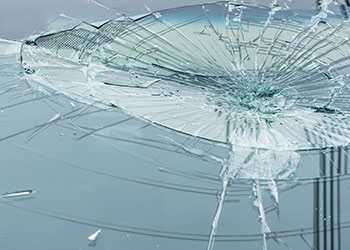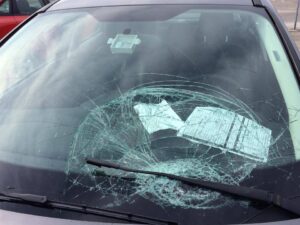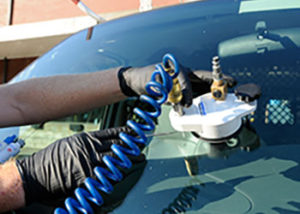Often overlooked, windshields are responsible for more than half of the structural integrity of your car. While windshield glass chips and cracks may seem insignificant, it’s actually incredibly important to repair them as soon as possible. But where to start? Let’s begin with the basics: identifying the damage, locating it, and measuring it. The kind of damage that your windshield incurs determines whether you’ll need a windshield repair or replacement.
Identifying type of damage
Take a look at the diagram below and see if you can identify the type of damage. These are the most common types of chips and cracks (but not all). Chips generally occur after a small rock or piece of debris hits your windshield. You will almost always find chips on the outer layer of your front windshield. On the other hand, cracks can form on any piece of glass in your car. They occur both in laminated glass (what your front windshield is made of) and tempered glass (what your back windshield and side windows are made of). Unlike chips, cracks can form without any impact.
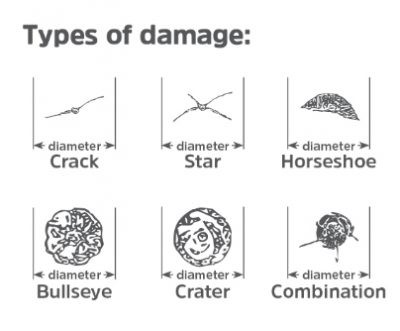
Locating the damage
Windshield visibility is divided into two main areas:
- Critical Vision Area (CVA)
- Primary Vision Area (PVA)
The critical vision area is directly in front of the driver; from the center of the steering wheel, vertically up to 90mm from the top edge of the windshield, down to 65mm from the bottom of your windshield. The width of your critical field of view measures 150mm on either side of the center of your steering wheel (see diagram below).
Match the location of your damage to find out if it is within the critical or primary area of vision.
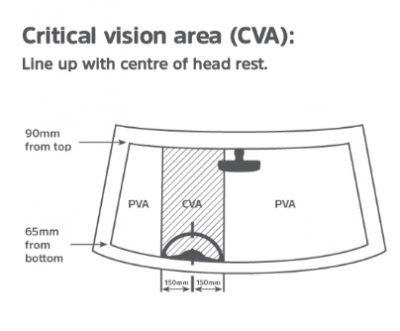
Measuring the damage After identifying and locating the damage, it’s time to measure the diameter of the chip/crack to determine whether repairs can be made, or if a replacement is necessary. Usually a windshield can be repaired if the damage is no larger than:
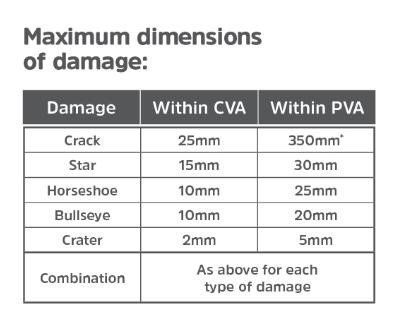
If you do not want to go through the hassle of measuring the diameter of your glass damage, you can also use the “silver dollar test” on your windshield. Take a silver dollar and place it on the dents and/or chips on your windshield. Any chip that is smaller in size than the coin qualifies for repair. Scratches on your windshield (surface-level ones) usually can be polished out, whereas deep scratches require windshield replacement. A crack in your windshield as a rule of thumb warrants a replacement, as cracks can cause structural instability in a windshield.
Having a good grasp of the kind of damage your windshield has, prepares you in advance for the repair/replacement process. Don’t wait too long and get your windshield in good shape fast!
Call Us Today
As a leader in windshield repair, we guarantee that our repair to your chipped or cracked windshield will be perfect and permanent! If it can’t be repaired, we can replace it using only high-quality glass and adhesives produced in the U.S. If you need expert advice, contact us at 321.223.4106


